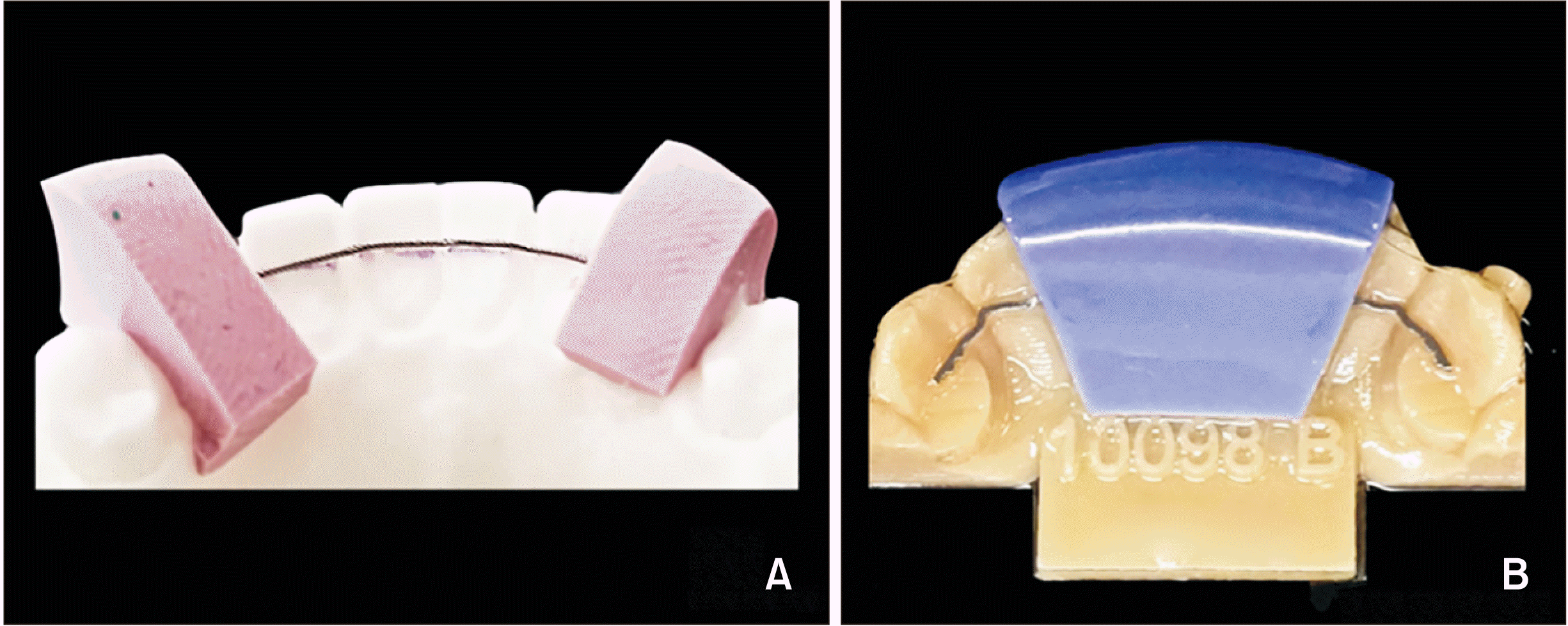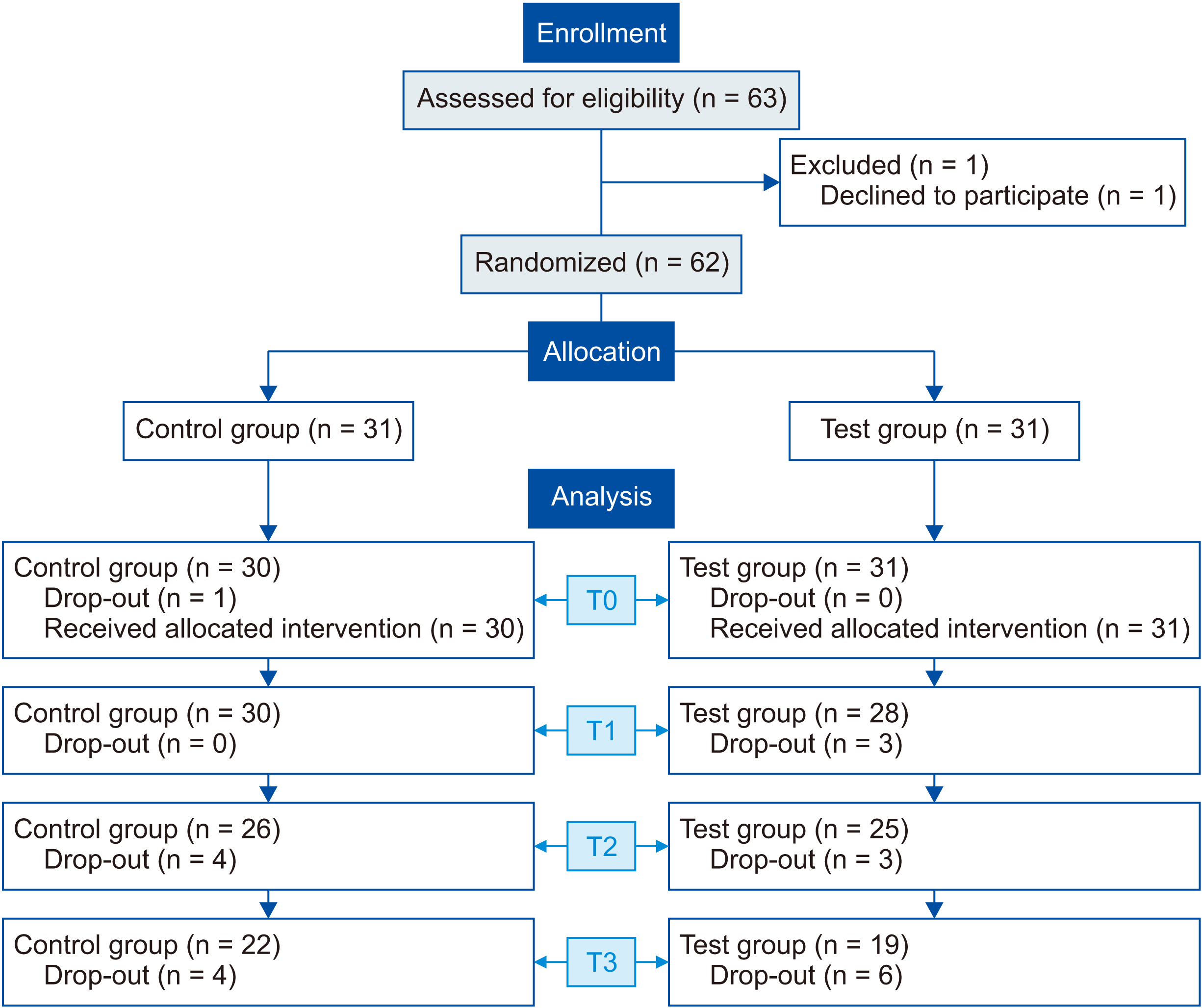2. Yu Y, Sun J, Lai W, Wu T, Koshy S, Shi Z. 2013; Interventions for managing relapse of the lower front teeth after orthodontic treatment. Cochrane Database Syst Rev. (9):CD008734. DOI:
10.1002/14651858.CD008734.pub2. PMID:
24014170.

3. Wolf M, Schumacher P, Jäger F, Wego J, Fritz U, Korbmacher-Steiner H, et al. 2015; Novel lingual retainer created using CAD/CAM technology: evaluation of its positioning accuracy. J Orofac Orthop. 76:164–74. DOI:
10.1007/s00056-014-0279-8. PMID:
25744094.
6. Kravitz ND, Grauer D, Schumacher P, Jo YM. 2017; Memotain: a CAD/CAM nickel-titanium lingual retainer. Am J Orthod Dentofacial Orthop. 151:812–5. DOI:
10.1016/j.ajodo.2016.11.021. PMID:
28364905.

7. Renkema AM, Renkema A, Bronkhorst E, Katsaros C. 2011; Long-term effectiveness of canine-to-canine bonded flexible spiral wire lingual retainers. Am J Orthod Dentofacial Orthop. 139:614–21. DOI:
10.1016/j.ajodo.2009.06.041. PMID:
21536204.

8. Knaup I, Wagner Y, Wego J, Fritz U, Jäger A, Wolf M. 2019; Potential impact of lingual retainers on oral health: comparison between conventional twistflex retainers and CAD/CAM fabricated nitinol retainers: a clinical in vitro and in vivo investigation. J Orofac Orthop. 80:88–96. DOI:
10.1007/s00056-019-00169-7. PMID:
30778609.
9. Aycan M, Goymen M. 2019; Comparison of the different retention appliances produced using CAD/CAM and conventional methods and different surface roughening methods. Lasers Med Sci. 34:287–96. DOI:
10.1007/s10103-018-2585-7. PMID:
30084028.

13. Loe H, Silness J. 1963; Periodontal disease in pregnancy. I. Prevalence and severity. Acta Odontol Scand. 21:533–51. DOI:
10.3109/00016356309011240. PMID:
14121956.
14. Silness J, Loe H. 1964; Periodontal disease in pregnancy. II. Correlation between oral hygiene and periodontal condtion. Acta Odontol Scand. 22:121–35. DOI:
10.3109/00016356408993968. PMID:
14158464.
15. Sullivan HC, Atkins JH. 1968; Freeutogenous gingival grafts. 1. Principles of successful grafting. Periodontics. 6:5–13. PMID:
4865672.
16. Greene JC, Vermillion JR. 1960; The oral hygiene index: a method for classifying oral hygiene status. J Am Dent Assoc. 61:172–9. DOI:
10.14219/jada.archive.1960.0177.

17. Steinnes J, Johnsen G, Kerosuo H. 2017; Stability of orthodontic treatment outcome in relation to retention status: an 8-year follow-up. Am J Orthod Dentofacial Orthop. 151:1027–33. DOI:
10.1016/j.ajodo.2016.10.032. PMID:
28554448.

18. Egli F, Bovali E, Kiliaridis S, Cornelis MA. 2017; Indirect vs direct bonding of mandibular fixed retainers in orthodontic patients: comparison of retainer failures and posttreatment stability. follow-up A 2-year of a single-center randomized controlled trial. Am J Orthod Dentofacial Orthop. 151:15–27. DOI:
10.1016/j.ajodo.2016.09.009. PMID:
28024770.
19. Swidi AJ, Griffin AE, Buschang PH. 2019; Mandibular alignment changes after full-fixed orthodontic treatment: a systematic review and meta-analysis. Eur J Orthod. 41:609–21. DOI:
10.1093/ejo/cjz004. PMID:
30788505.

20. Gunay F, Oz AA. 2018; Clinical effectiveness of 2 orthodontic retainer wires on mandibular arch retention. Am J Orthod Dentofacial Orthop. 153:232–8. DOI:
10.1016/j.ajodo.2017.06.019. PMID:
29407500.

21. Möhlhenrich SC, Jäger F, Jäger A, Schumacher P, Wolf M, Fritz U, et al. 2018; Biomechanical properties of CAD/CAM-individualized nickel-titanium lingual retainers: an in vitro study. J Orofac Orthop. 79:309–19. DOI:
10.1007/s00056-018-0144-2. PMID:
30014179.

22. Zinelis S, Pandis N, Al Jabbari YS, Eliades G, Eliades T. 2018; Does long-term intraoral service affect the mechanical properties and elemental composition of multistranded wires of lingual fixed retainers? Eur J Orthod. 40:126–31. DOI:
10.1093/ejo/cjx045. PMID:
28633359.

23. Al-Nimri K, Al Habashneh R, Obeidat M. 2009; Gingival health and relapse tendency: a prospective study of two types of lower fixed retainers. Aust Orthod J. 25:142–6. PMID:
20043549.
24. Schneider E, Ruf S. 2011; Upper bonded retainers: survival and failure rates. Angle Orthod. 81:1050–6. DOI:
10.2319/022211-132.1. PMID:
21657830.
25. Arn ML, Dritsas K, Pandis N, Kloukos D. 2020; The effects of fixed orthodontic retainers on periodontal health: a systematic review. Am J Orthod Dentofacial Orthop. 157:156–64.e17. DOI:
10.1016/j.ajodo.2019.10.010. PMID:
32005466.

26. Wouters C, Lamberts TA, Kuijpers-Jagtman AM, Renkema AM. 2019; Development of a clinical practice guideline for orthodontic retention. Orthod Craniofac Res. 22:69–80. DOI:
10.1111/ocr.12302. PMID:
30771260. PMCID:
PMC6850190.

27. Doldo T, Di Vece L, Ferrari Cagidiaco E, Nuti N, Parrini S, Ferrari M, et al. 2018; A New Generation of Orthodontic retainer using 3d printing technology: clinical cases report. J Osseointegration. 10:142–8.
28. Macauley D, Garvey TM, Dowling AH, Fleming GJ. 2012; Using Little's Irregularity Index in orthodontics: outdated and inaccurate? J Dent. 40:1127–33. DOI:
10.1016/j.jdent.2012.09.010. PMID:
23000526.

29. Forde K, Storey M, Littlewood SJ, Scott P, Luther F, Kang J. 2018; Bonded versus vacuum-formed retainers: a randomized controlled trial. Part 1: stability, retainer survival, and patient satisfaction outcomes after 12 months. Eur J Orthod. 40:387–98. DOI:
10.1093/ejo/cjx058. PMID:
29059289.

30. Hu X, Ling J, Wu X. 2019; The CAD/CAM method is more efficient and stable in fabricating of lingual retainer compared with the conventional method. Biomed J Sci Tech Res. 18:13609–12. DOI:
10.26717/BJSTR.2019.18.003157.






 PDF
PDF Citation
Citation Print
Print





 XML Download
XML Download